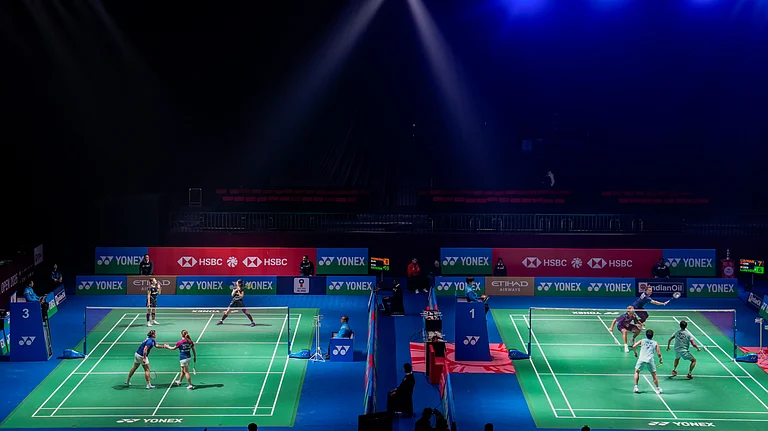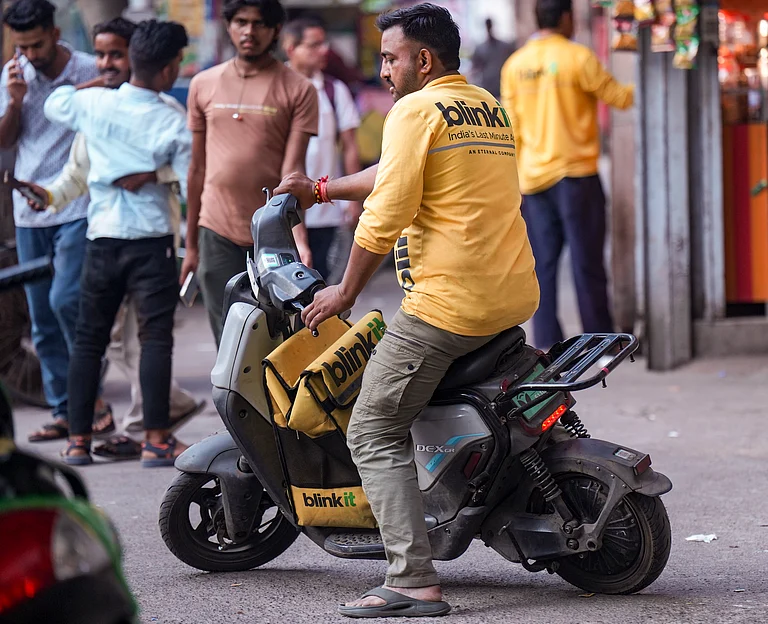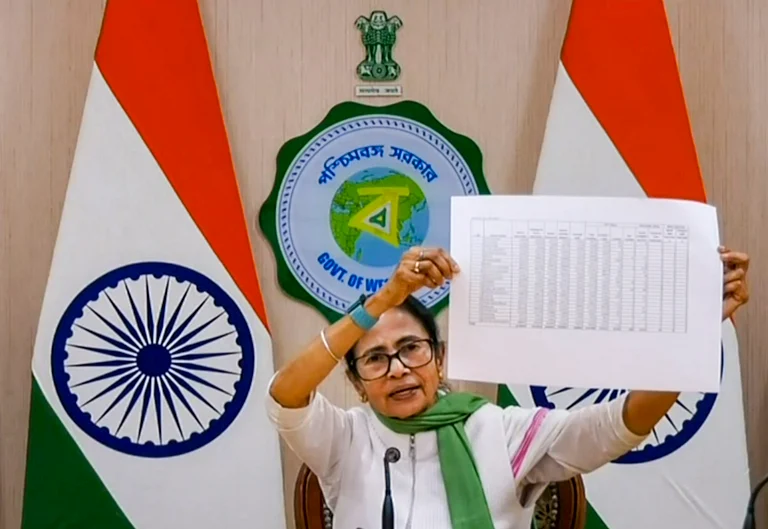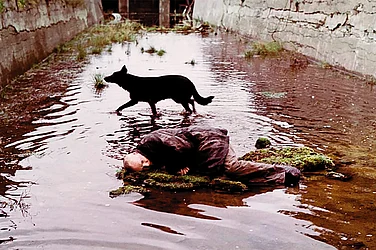On the night of 11 December, hours before its scheduled opening, the Kochi-Muziris Biennale (KMB) was officially postponed to 23 December, citing “organisational challenges compounded by external factors.” Founded in 2012, the KMB is an important event in the global art calendar, and is currently in its fifth edition, having already been pushed by the two years lost to the pandemic. In an open letter to the Biennale Foundation management, over 50 of the invited artists allege financial mismanagement, last-minute fund-raising, production delays, insufficient staff, unavailability of venues and toilets, shipping delays and shockingly poor communication. Shubigi Rao, the Singapore-based artist-writer who was announced as the curator of the 2020 edition of the KMB (which was postponed to 2022) and has, therefore, been planning this edition for the last four years, found herself having to change five hotels so far. The curator’s logistical nightmare merely scratches the surface of the level of mismanagement and apathy on the part of the founders towards the artists in putting together what is often proudly hailed as “an artist-run biennale.”
The idea of ‘an artist-run biennale’ centred at Kochi was born on 30 May 2010, when a small group of people gathered at Silver Coin, a restaurant in Mumbai’s West Borivali. The gathering included M A Baby, the then minister for education and culture in the Kerala government, and Mumbai-based Malayali artists Riyas Komu, Bose Krishnamachari and Jyoti Basu. Approached by the ministry to start a progressive international art project in the state, the artists proposed a ‘biennale’— Italian for ‘once every two years’—along the lines of the Venice Biennale. 13 years later, the KMB has emerged as the largest contemporary art festival in Asia.
For the KMB to truly be ‘an artist-run’ affair, it was important for the founders to ensure that every edition was curated by an artist and that the funds were managed primarily by the artists themselves. It was with this stated autonomous spirit that the Kochi Biennale Foundation (KBF) was established in 2011 with the financial support of the incumbent Left Democratic Front (LDF) government, which sanctioned the release of Rs 5 Cr from the public exchequer to what was a new organisation run by a handful of ‘outsider’ artists. Moreover, public institutions established for the promotion of art and culture in the state like the Lalithakala Akademi had little role in the decision-making processes of the KMB. The foundation, therefore, was an out-of-the-box and risky idea, with the potential to have its issues dissected by political opponents. It is no surprise, then, that the Biennale and its foundation have been running into one controversy after another ever since their inception.
No Stranger to Controversy
In 2011, a group of leading Kerala-based artists including Kanayi Kunjiraman, M V Devan, Yusuf Arakkal and Achuthan Koodallur raised objections against the KMB, alleging that the state was betraying its local artists and cultural institutions which were already conducting events such as the Chalachitra Academy’s International Film Festival of Kerala on far more meagre budgets. The agitation strengthened on 17 April 2012, when a group of 40 artists, led by Kunjiraman, a renowned sculpture and artist, gathered at Durbar Hall, one of the main venues of the first edition of the KMB. They tied a large band of black cloth around the building, a symbolic act of ‘protecting the building from the doom of Biennale.’
Malayalam media was soon awash with stories and articles that amplified the allegations of corruption and neglect of local artistic talent. A prominent Malayalam weekly, Mathrubhumi, carried a staunch critical analysis of the content and objective of the Biennale, referring to the same as a “caparisoned display of art for the global market giving little contribution to the local art.” Another Malayalam weekly, Madhyamam carried a series of articles alleging financial fraud and vested interests on the part of the founders of the KMB. The tenure of the LDF Government coming to an end in 2011 and the Congress-led UDF coming to power also rendered uncertain the future of the KBF. A vigilance inquiry was initiated, but was withdrawn later.
Yet another point of contention for critics of the Biennale was its association with Muziris—an ancient port town that is believed to have existed till the 14th century C.E. during the Chera dynasty. According to historians, the port town drowned and vanished in a catastrophic flood caused by a deadly cyclone, with recent excavations bringing the mythical town back into contemporary debate. The initial aid of Rs 5 Cr that was sanctioned to the KBF had come from the state’s Tourism Department, specifically from the Kochi Muziris Heritage Project. A government order dated 13 October 2010 reads: “The cultural affairs department has requested to release Rs 5 Cr from the funds allocated to the Muziris heritage project. The government has examined the matter in detail and is pleased to sanction the amount.”
The renaming of the ‘Kochi Biennale’ to the ‘Kochi-Muziris Biennale’ was explained in KMB’s vision document as an attempt to “create a new language of cosmopolitanism and modernity that is rooted in the lived experiences of this old trading port.” Dismissing the KMB’s stated motive, critics argued instead that Muziris came into the picture only due to financial and legal reasons.
In 2018, the Biennale came under fire, when, at the height of the ‘Me too’ movement, Riyas Komu, co-founder, trustee and Director of Programmes (DoP) of the Biennale, was accused of sexual assault in an anonymous Instagram post. Komu claimed that the allegations were ‘unfounded’ and resigned from his roles as trustee and DoP and is no longer formally associated with the KMB.
Towards the Democratisation of Art
The slew of controversies that have plagued the Biennale and its foundation ever since their inception have not affected footfalls to the event. “In fact, the controversies born along with the birth of the very idea of the Biennale helped us tremendously,” says Bonny Thomas, cartoonist, writer and a permanent trustee of the foundation. Since the opening of the Biennale on 12 December 2012, people from all walks of life have come in large numbers that have only increased with every edition. The fourth edition, curated by Anita Dube with the theme, ‘Possibilities for a Non-Alienated Life’, saw an attendance of 6 lakh people over a 4 month period. The term ‘biennale,’ which was quite new to the local lexicon at the beginning, quickly became familiar as ‘binaley’ to the locals—even to school-going students. Consistent media reports of the controversies surrounding the event as well as the intersection of art and politics have succeeded in sustaining people’s interest in and curiosity for every edition of the Kochi-Muziris Biennale.
As a people, Malayalis are assumed to be art-loving, left-liberal, progressive critical thinkers who are in touch with the politics of their land. But they can also be “extremely conservative and conventional,” says P K Hormis Tharakan, former Director General of Police and erstwhile chief of the Research and Analysis Wing (R&AW). He adds, “The fear of cosmopolitanism and liberalisation of art comes from this conservativism”. Tharakan was once a trustee of the KBF during its initial years and is not uncritical about the management and administration of the event. However, he admits that the Biennale has brought revolutionary changes in the art sensibilities of the people of Kerala.
The fifth edition of the Biennale saw Jiji, Reghu, Jilu, Charutha and Surekha travel from Ponnani in Malappuram District to Aspinwall House, the main venue of the current edition. For some of them, this was not their first Biennale experience, having been regulars since the 3rd edition in 2016 that was curated by Sudarshan Shetty with the theme, ‘Forming in the Pupil of an Eye’. “We are not trained in art, hence we are not good at explaining,” says Reghu, hesitant to discuss the art works on display. Though reluctant to talk about art, they could easily resonate with the current theme, ‘In Our Veins Flow Ink and Fire.’ “The stories of resistance connect people across boundaries,” says Reghu.
Santhosh Kumar is a government employee who travelled from Kannur to Kochi for the Biennale. Kumar, who is an active member of a Left-affiliated service organisation of employees, has come with a group of friends. “In a politically active society like Kerala, the theme of the Biennale is well accepted. Though we do not have the skills to enjoy an art work in the right sense, we are fascinated by many of the works exhibited here that narrate the stories of people’s struggle. It reminds us that the stories of human beings are the same everywhere,” says Kumar.
An undisputed fact about the Biennale that stumps spectators, researchers and think-tanks such as McKinsey is the massive participation of ordinary people. “Artists always want to get feedback from the very ordinary people, not only from the elite art circle who might be academically trained in art appreciation,” says Ritu Sarin, filmmaker and artist. ‘Shadow Circus—A Personal Archive of Tibetan Resistance (1957-1974)’, a project by Ritu Sarin and Tenzing Sonam is exhibited at the Biennale this year. It comprises photographs, handwritten letters, documents and video illustrations that narrate the role of the CIA in the Tibetan uprising against Chinese invasion.
The Shoulders that Hold Up the Art
According to Thomas, the natives of Fort Kochi—the vendors, auto drivers and the head load workers— are the real ‘unsung heroes’ who make the Biennale successful. “We have been going through deep financial trouble. We are overwhelmed by the cooperation extended by the head load workers in Fort Kochi in shifting the art works to the venue,” says Thomas.
This time, around fifty head load workers in Fort Kochi were available to carry the art works and video installations shipped from different states and countries to the venues. Anwar, a 52-year-old head load worker and member of CITU, says, “The Biennale brings a lot of economic prosperity to our place. Hence it is our duty to support and make it happen.” The head load workers affiliated to both CITU and INTUC had collectively taken the decision not to demand a higher rate than that of the last Biennale in 2018. “We do not negotiate for payment, they will give us whenever they can”, says Anwar. “We have to be very careful while carrying the sculptures and paintings. Even a single scratch would affect the value of an artwork,” he adds.
Damage Control, With A Vision
Irrespective of the controversies and issues of transparency that circumscribe the Biennale, the event has become a permanent fixture in the landscape of global contemporary art. The effect that it has had on local art and artists is not as straightforward but is worthy of analysis. Krishnamachari is confident that “Kerala’s art history has to be categorised as pre- and post-Biennale.” Discussing the ‘Lokame Tharavadu’ art show conducted by the KBF in Alappuzha in 2021, Krishnamachari says, “Works of 267 Malayali artists were on display. In the on-going fifth edition of Biennale, there are the works of 34 Malayali artists. Many of them received calls for exhibitions outside Kerala.”
Smitha G S, an artist based in Calicut with no formal training, validates the co-founder’s claims. “My life as an artist has changed tremendously since my association with the Biennale. I got an opportunity to exhibit my works in the 2020 Lokame Tharavadu exhibition and now in this fifth edition of KMB,” says Smitha.
In her curatorial statement, Rao—an outsider in more ways than one—describes the Biennale as a “bulwark against despair” in its “refusal in the face of disillusionment to disavow our poetry, our languages, our art and music, our optimism and humour.” Rao is also credited with bringing artists to the KMB that typically get overlooked, especially women from the global south. However, to realise her vision as well as those that succeed her, the trustees of the KBF must make the necessary changes to its structure and functioning so that the artists, staff and spectators do not feel as ignored and alienated as they did this year. After all, the main banner across Aspinwall House reads, in bold, gorgeous lettering, “It’s our Biennale.”


























